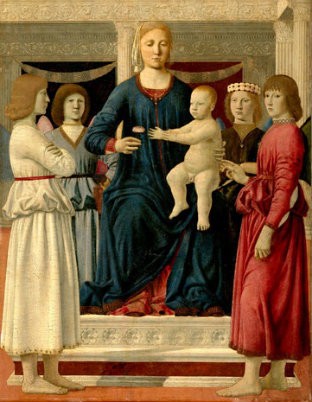Seeing through Piero

If you want to immerse yourself in the art of the early Renaissance Italian painter Piero della Francesca, you need to make a pilgrimage to several small Italian hill towns as well as to museums in London and Paris, Boston and New York City and Williamstown, Massachusetts. Many art critics attest that this is a pilgrimage well worth making. Piero’s paintings have the power to change lives, as art critic Peter Schjeldahl recently testified in the New Yorker (February 25). The serene dignity of his figures and forms “makes a viewer’s spirit sit up straight.”
So if you have the chance to see paintings by Piero della Francesca at the Frick Collection in New York this spring, don’t miss it. The exhibit gathers up all but one of Piero’s works held in American museums (plus a seventh from Portugal). Six of the panels come from the altarpiece Piero created for the Church of St. Augustine in Borgo San Sepolcro, his hometown. The seventh is a portrait of the virgin and child flanked by four angels, whose profound stillness and intelligence compel the attention of the viewer with an almost irresistible power.
The reviews of the exhibit have been enthusiastic, even rapturous, but they struggle to account for the religious quality of Piero’s art. The reviewers seem to want to hold Piero’s genius close while holding his religion at arm’s length. But is it possible to separate the painterly challenges that Piero set for himself from the religious ideas that he sought to explore? Is it possible to extract his artistic genius from his religious thought?




